When we spot a jellyfish while swimming at the beach, we’re looking at a creature that has been living on Earth for more than 500 million years. Although their sting can be a concern, watching these graceful, ancient swimmers from a safe distance can be a mesmerizing experience.
Jellyfish are true survivors. They thrive in extreme environments, from the icy waters of Antarctica to the warm tropical seas. Some prefer coastal shallows, while others inhabit the open ocean or even saltwater lakes. In this article, we’ll explore 10 remarkable types of jellyfish, their unique traits, and where you can find them.
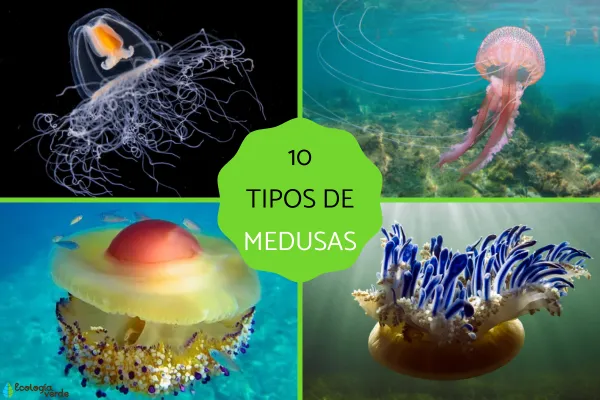
Jellyfish are invertebrates belonging to the phylum Cnidaria, and they have colonized nearly every marine environment on the planet. About 95% of their body is made of water, which allows them to float effortlessly. All jellyfish share three main body parts:
Umbrella (Bell): Dome-shaped body structure
Manubrium: A central structure that holds the mouth
Tentacles: Used for capturing prey and defense
Here are more notable features of jellyfish:
While ocean currents mostly determine their direction, jellyfish have muscle rings in their bell that allow them to pulse and swim actively, though not rapidly.
Jellyfish undergo a two-phase life cycle: their larvae (planula) settle on the seafloor and develop into polyps, which later produce free-swimming medusae (jellyfish). Learn more about animals that don’t move in our related post.
Jellyfish tentacles contain stinging cells called cnidocytes, which house tiny capsules called nematocysts. These inject venom into prey or predators by firing a microscopic harpoon-like filament.
Once prey is immobilized by the venom, oral tentacles carry it to the gastrovascular cavity for digestion.
They primarily feed on zooplankton and small crustaceans, though some species may also consume tiny fish or even other jellyfish.
Jellyfish possess sensory structures called rhopalia, which include:
Statocysts for balance and orientation
Ocelli for detecting light intensity
Often found near coastlines, moon jellyfish are easily recognized by the four horseshoe-shaped gonads visible through their transparent bell. Aurelia aurita, one of the most studied species, thrives in water temperatures between 9°C and 19°C, though it can survive outside this range. Their wide tolerance makes them one of the most widespread jellyfish.
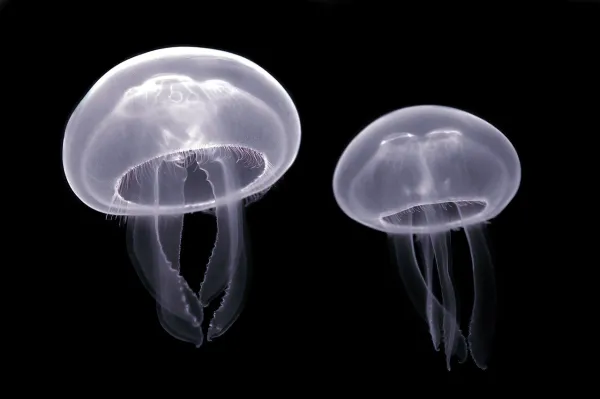
Nicknamed the “fried egg jellyfish” due to the yellow dome in the center of its bell, resembling an egg yolk. Its branched oral arms end in disc-shaped tips, some of which are purple. These jellyfish usually reach 30 cm in diameter, with some growing up to 50 cm. Found primarily in the eastern Mediterranean Sea, their sting is mild or harmless.
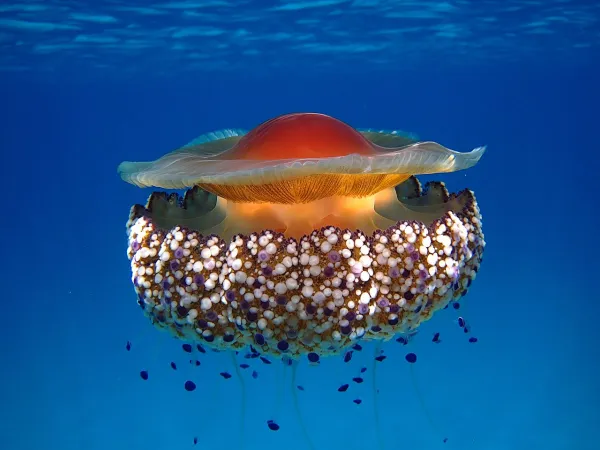
Common in the Mediterranean Sea and Atlantic Ocean, this species ranges in color from purple to brown and has four elongated oral arms. The name “noctiluca” means “night light,” as this jellyfish is bioluminescent—it glows when disturbed by waves or boats. It’s responsible for many stings in the Mediterranean.
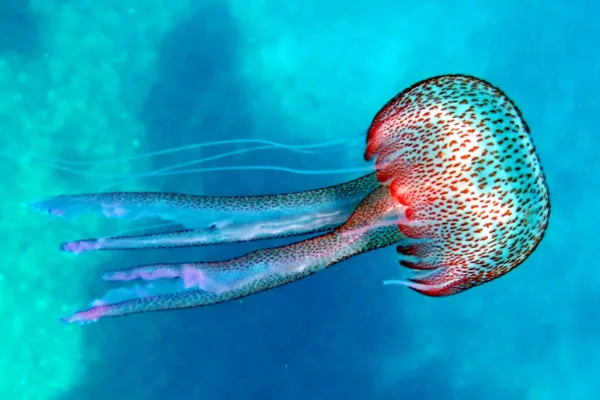
Thriving in cold surface waters around Antarctica, this transparent jellyfish has an umbrella up to 18 cm wide, with striking orange gastrodermis that extends into its oral tentacles. Its diet includes krill, small crustaceans, fish larvae, and tiny mollusks.
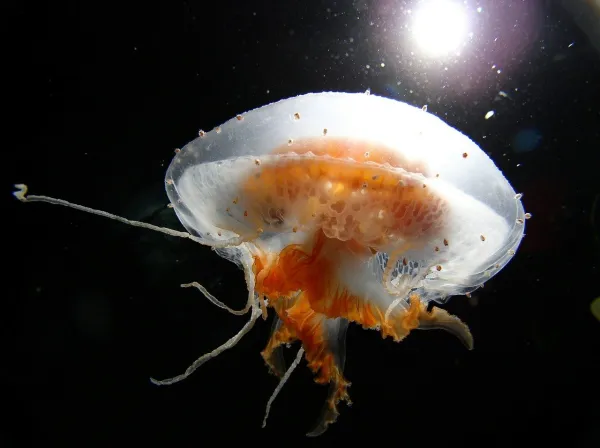
Tiny but incredible, this jellyfish only measures less than 5 cm, but it has the unique ability to reverse its life cycle and return to the polyp stage when injured or starved. This biological process, called transdifferentiation, allows it to regenerate indefinitely, making it biologically immortal—a marvel of evolution.
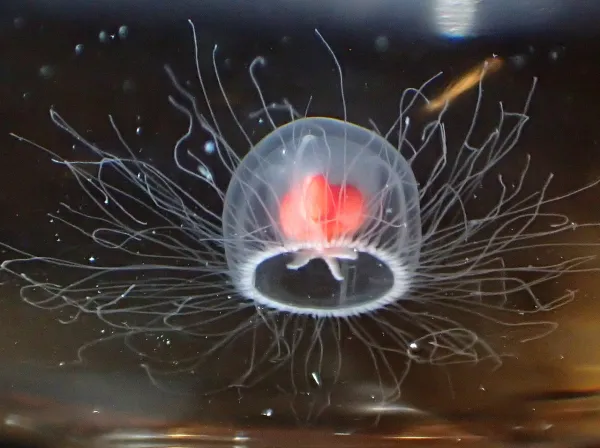
The largest known jellyfish species, its bell can span 30 to 180 cm, and its tentacles can grow over 36 meters. A specimen found in Massachusetts Bay in 1870 had a bell over 2 meters wide. Its dozens of long, reddish tentacles resemble a lion’s mane and can deliver painful stings. Found in the Atlantic, Pacific, North Sea, and Baltic Sea.
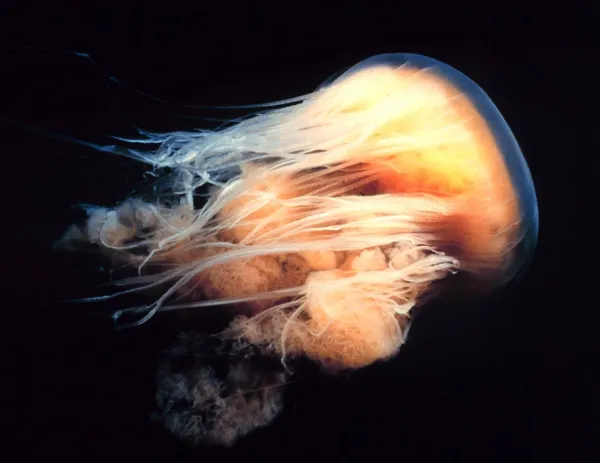
This jellyfish produces blue bioluminescence via a molecule called aequorin that reacts with calcium. The blue light activates green fluorescent protein (GFP), which emits green light. GFP has become an essential tool in genetic and cellular research, allowing scientists to track cells using UV light.
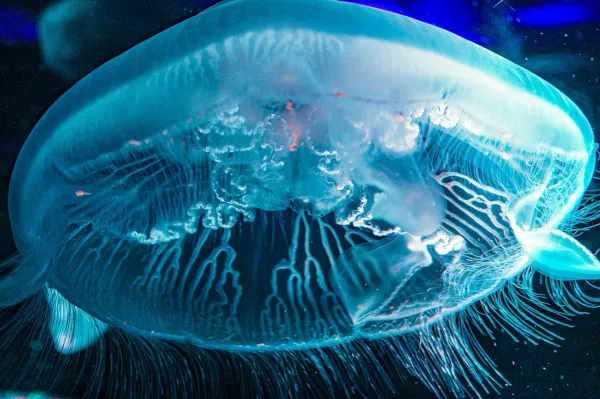
Found in the warm waters of the western Pacific and Indian Oceans, especially in the saltwater lakes of Palau, this species harbors symbiotic zooxanthellae algae. These algae perform photosynthesis, producing nutrients for the jellyfish. They’re harmless to humans, making swimming among them a popular ecotourism activity.
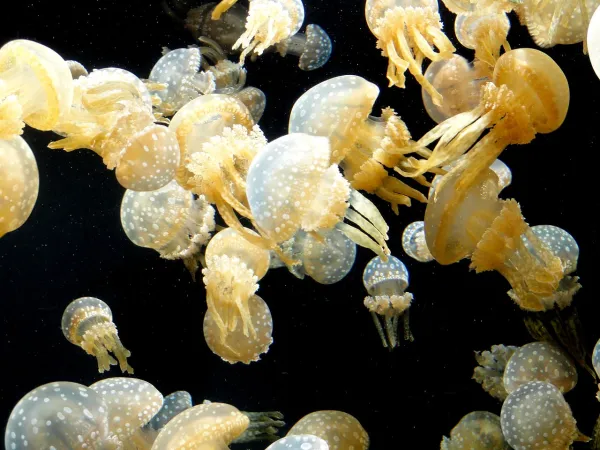
Though capable of swimming, these jellyfish often rest upside-down on the seafloor, with their tentacles facing up to capture sunlight for their symbiotic algae (zooxanthellae). This position maximizes photosynthesis, providing the jellyfish with nutrients and earning them the nickname “upside-down jellyfish.”
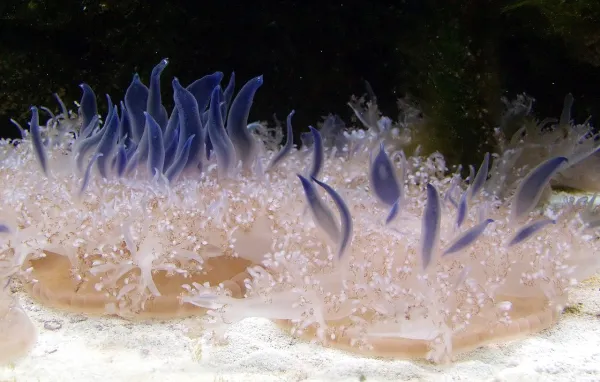
Unlike the other species listed (mostly scyphozoans or “true jellyfish”), Carukia barnesi is a box jellyfish (Cubozoa)—famous for its extremely potent sting. Measuring only 12–30 mm, its long tentacles (up to 80 cm) are nearly invisible. Found in northern Australian waters, its sting can cause Irukandji syndrome, with symptoms including:
Severe headache
Nausea and vomiting
Chest pain
Difficulty breathing
In some cases, it can be fatal.
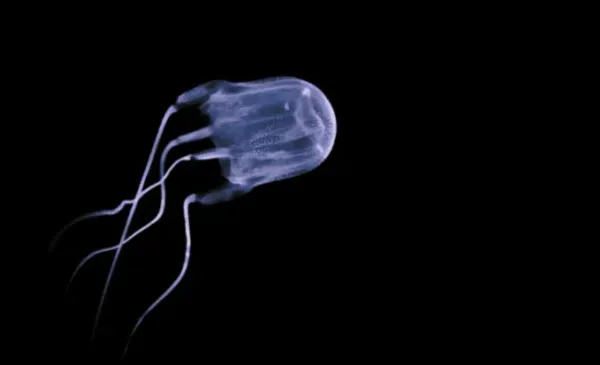
Still curious about more jellyfish species? Be sure to check out our article on the Box Jellyfish (Sea Wasp) — the most venomous jellyfish in the world, and one of the most lethal animals on the planet.
Explore More
If you enjoyed learning about these incredible jellyfish, dive deeper into our Wild Animals category to discover more about marine creatures and their extraordinary adaptations.
Bibliografía
Fenner P, Carney I. The Irukandji syndrome. A devastating syndrome caused by a north Australian jellyfish. Aust Fam Physician. 1999 Nov;28(11):1131-7. PMID: 10615756.
Naylor, B. 2000. "Cyanea capillata" (On-line), Animal Diversity Web. Accessed March 08, 2022 . Visto en https://animaldiversity.org/accounts/Cyanea_capillata/
Chang, Y. 2011. "Mastigias papua" (On-line), Animal Diversity Web. Accessed March 07, 2022 at https://animaldiversity.org/accounts/Mastigias_papua/
Zou, Yawen, "Green Fluorescent Protein". Embryo Project Encyclopedia (2014-06-11). ISSN: 1940-5030 http://embryo.asu.edu/handle/10776/7903.
animal tags: Jellyfish
We created this article in conjunction with AI technology, then made sure it was fact-checked and edited by a Animals Top editor.